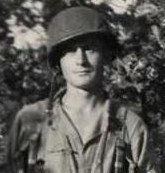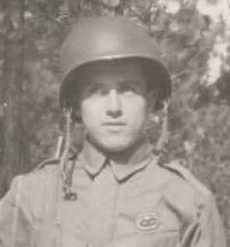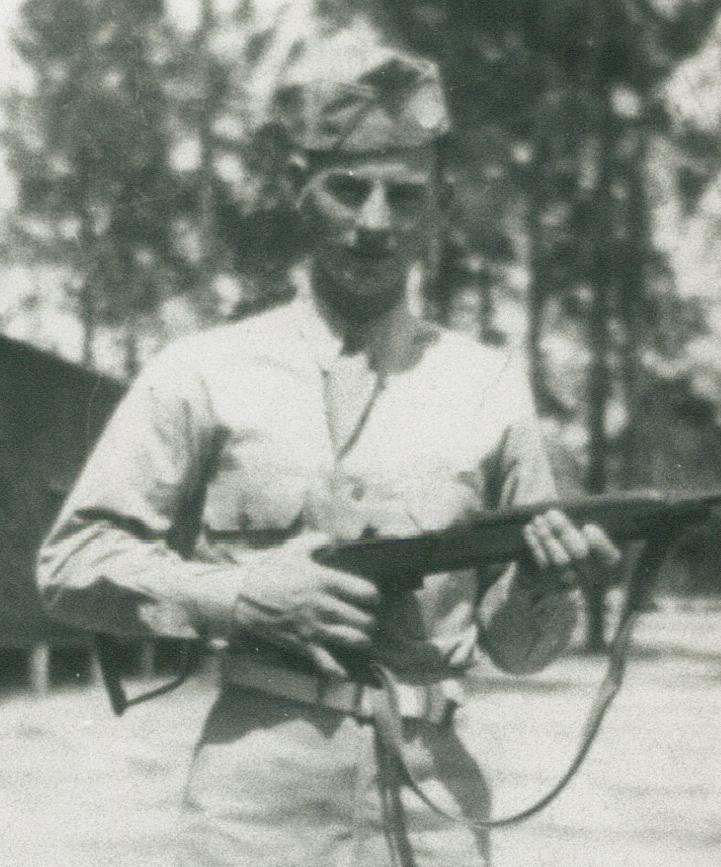GLEN A. DERBER, Cpl. -
Glen Derber was born on his parents' farm in Oshkosh Wisconsin. He joined the paratroopers in January of 1943, seeing it as an opportunity to do his part for his country as well a way to get off of the farm when the local companies and factories would not hire him for fear that as soon as they had trained him he would be drafted. Derber fought in all WWII Campaigns of the 501st. He was wounded while fighting in Normandy. He had learned to shoot while at home and improved his skill at a local gun club. The training did not fail him. While fighting in Holland, he made an incredible shot yard shot to take out a German soldier. This is the longest confirmed kill in the 101st in WWII.
In his account, Glen Derber outlined the structure of the light machingun platoon: "An LMG platoon consisted of eight LMG's, each with a crew of four men, two section leaders, a platoon leader and a platoon Officer, 36 men total." That was the design. Here are the men that filled it. Seventeen of them did not return home.
Blood Brothers: The Men of HQ company 2nd Battalion Light Machine Gun Platoon
GLEASON ROBERTS, Cpl. -
From Virginia, he joined the paratroopers at Toccoa Georgia. He was wounded in the Bastogne campaign.

WARREN L. DENNIS, cpl. -
From Arkansas.
HARRY COFFEY Jr., Pvt. -
Came into the unit at Camp Mackall. TX or OK. He was slimly built.About 5'10". He was described as quiet, but smiley. Was an ammo bearer in Roberts' and Eckman's crew.
PELHAM P. NOYES, Pvt. -
From Maine. Good boxer. Excellent soldier. Wounded 7 times in combat. In Holland he was hit in face with spent bullet. It lodged in his cheek.

MANUEL DANDIS, Pvt. -
Close buddy to Glen Derber. "The Greek", as he was known, came from California (San Francisco area?). Highly developed sense of humor and a penchant for mischievous behavior, he proved courageous in battle. His humor kept the troopers around him at greater ease than otherwise while under fire. In Holland, he broke his jaw on the Battallion DZ, but refused to be evacuated. A few days later he was up at the front as part of the Bazooka team. During some of the heavy fighting around Bizory near Bastogne, he was seen moving to the rear with a wound from 20mm shell. Dandis survived the war only to be tragically killed in a car accident in California a few yerars? later.
"My Buddies and I gathered together, nicked our fingers with knives, and mingled our blood. We swore we would fight to the death for eachother." Charles Eckman.
Combat melded the men of the machine gun platoon together in a way that no training could. It created bonds and loyalties unparalled in any other walk of life. To this day the men remaining still strongly hold to this brotherhood.... They are brothers of blood so sworn on the field of battle.
CHARLES E. S. ECKMAN, PFC -
Charles E. S. Eckman, haling from Lancaster County Pennsylvania, was not old enough to join solely of his own volition, but entered the army with his parent's consent. It took him several months to convince his parents to do so. He immediately volunteered for the paratroopers, having heard of them from one of his brothers who was serving as a Marine. Like many men, he wanted to serve his country, be part of something new and daring, and also needed the very practical extra jump pay. Despite his young age and smaller frame, Charley made it through training with flying colors. He would become the youngest and most wounded soldier of the 501 Parachute infantry Regiment in WWII. Some of his fellow paratroopers thought he could be a bit "reckless" in his soldiering. Charley responded to such comments that if he did not do what had to be done that someone else would have to do it. Charley was wounded 17 times in about 6 months of combat-- aptly described as "a rigorous count," by one author.
While serving in the defense of Bastogne in January 3-4 of 1945, Charley, upon inquiry by their unit commander Captain Rhett, volunteered to find a fellow gun crew member who had been last seen out in an listening post. It was the same listening post that Eckman and Schwabe them had manned earlier in the day. Charley had moved to a new position. The post had subsequently become overrun and the trooper was unaccounted for.
Eckman took off to the edge of the woods where the company he was supporting was positioned in order to run the gauntlet of some 200 or more yards of open terrain under direct enemy fire. A fellow trooper, Henry Schwabe, then acting as a runner for Captain Rhett, heard the conversation between Charley and the Captain and went after him, offering to go with him to find Coffey. Together they ran out to the listening post which was situated in a large depression in the ground and came under intense enemy fire. The two took cover in the depression. The depression was filled with bodies of dead troopers and Germans. Charley went head over heals to the bottom and began to pull bodies from the pile to find Coffey, his own gun crew's ammo bearer. After pulling about four dead bodies out of the way, Coffey jumped up and clasped onto Charley. Visibly shaken, shivering and speechless, Coffey would not let go his grasp on Charley. Charley checked to make sure he was not wounded severely and then took him up to Schwabe. The both of them grabbed Coffey by his belt loops and ran back across the open field with him between them. As they ran Charley was hit several times by enemy fire. Each time he was knocked down he got back up and began to run again. They made it back to the cover of the woods, but not before Charley had been hit several times. One officer also fighting in that area, Lt. Russo, seeing the action and Charley's consequent condition, told a fellow trooper many years after the war that he had seen Charley-- all chopped up and bloody. He saw him die. He also believed that Charley had received the DSC for this action. Charley Eckman did not die, but in fact, survived his massive wounds at Bastogne and returned to his unit after the Alsace campaign. That is a story in itself. During his absence from the unit, Henry Schawbe was killed by new man on the line, while returning from a night patrol in Alsace.
A closer look at his hands and you will see they are speckled almost as with white paint. They are not specks of paint. They are the scars of combat-- of shrapnel from the enemy's weapons and from having multiple machine guns knocked out from under him.
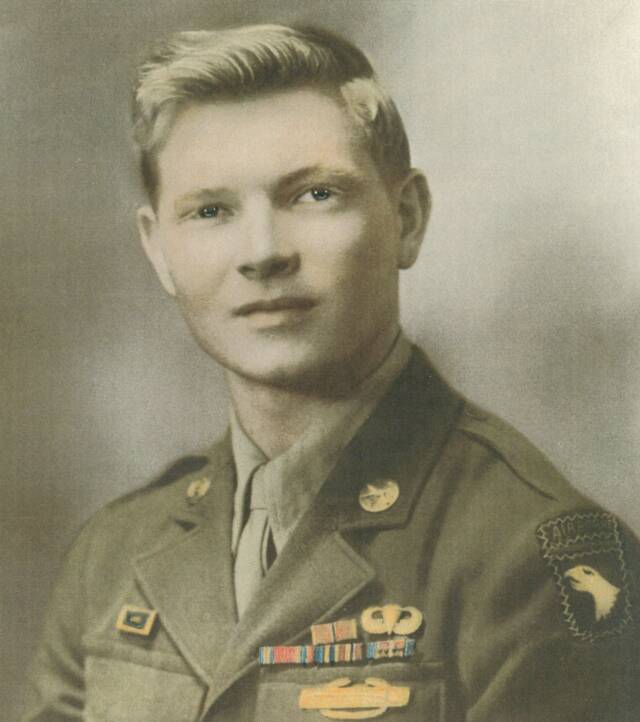
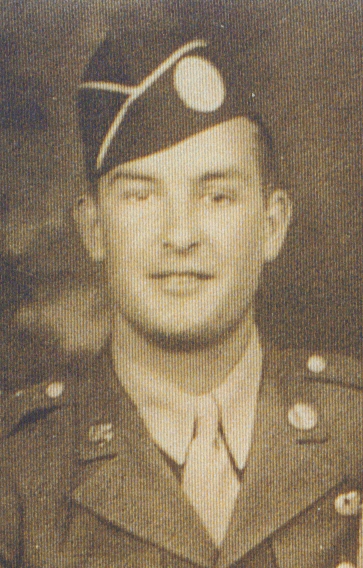
FLETCHER P. CRANFORD, Cpl. -
- From?
Members of the LMG Platoon at Camp Mackall, NC in 1943. Derber via Eckman
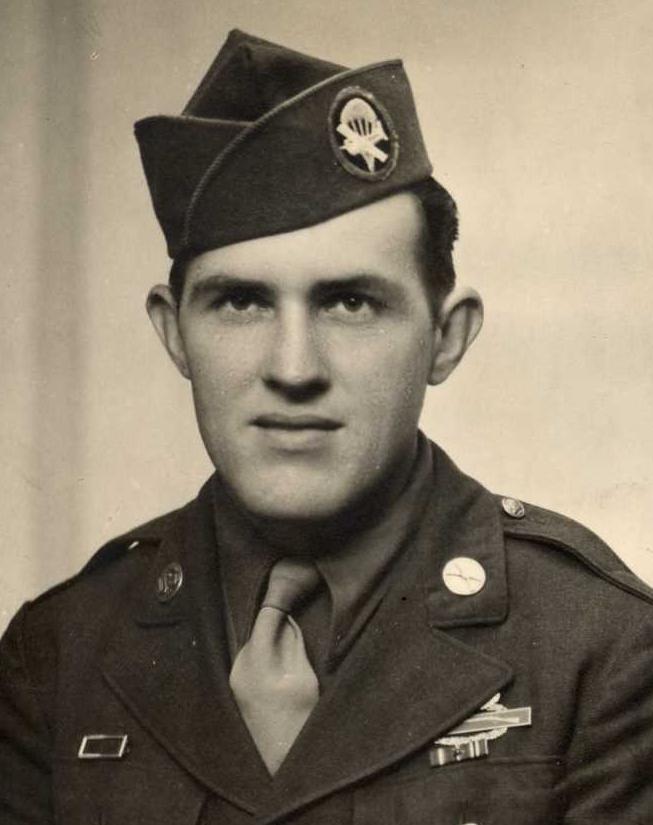
HARRY D. ANTOON, Pfc. - From Cleveland Ohio. Was quite a character in the platoon.
BRUCE BEYER, Cpl. -
From Buffalo NY? Wounded in Holland on 24th of September.
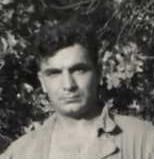

WILLIAM F. BURGE, SGT. - (Cpl?) Used to sing ole' Shep.
BILL COOK-
PRUSA, EDWARD J., SGT. -
From Wisconsin.
ROBERT S. FARRANT -
GEORGE SHIELDS -
DELWIN SCHNOOR -
AL GOSHORN - from Chicago?
RHETT Cpt. -
RAYMOND K. TAYER, Cpl. -
